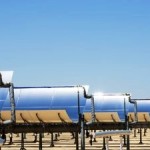Rio de Janeiro – As Brazil prepares for the 2014 World Cup and 2016 Summer Olympics, the UN Environment Programme (UNEP) released a report on October 9 on the environmental performance of South Africa 2010 that highlights both successes and lessons that should be learned to ensure the sustainability of both events in Brazil.
The independent review showed that South Africa 2010’s carbon footprint was far lower than projected, due to fewer visitors than expected, carpooling and Park and Ride schemes, and efficient stadia that cut energy use by an estimated 30 per cent. Solar-powered technology and renewable energy use also contributed to the lower profile.
The actual footprint was 1.65 million Tonnes of CO2 equivalent, compared to a projection of 2.64 million.

UNEP worked with the South African government through the Green Goal 2010 project to promote initiatives such as cutting the tournament’s carbon footprint, reducing waste and water use, and conserving and enhancing biodiversity. Such initiatives are set to be pushed to the next level in Brazil with the aim of creating truly green events.
While the Global Environment Facility (GEF)-funded review of South Africa’s green performance found many successful initiatives, it said that a lack of focus on environmental considerations in the planning phase of the tournament meant the full potential was not achieved.
“The report points to many great initiatives, but perhaps the most important finding is that South Africa could have achieved more if sustainability measures had been brought in sooner rather than later,” said UN Under-Secretary General and UNEP Executive Director Achim Steiner. “Indeed, it underlines that achieving the full potential of greening such tournaments is likely if sustainability is factored into the planning, design and construction from the word go.”
Despite some difficulties in compiling enough data to fully evaluate the green performance of the tournament, the report highlighted many specific examples of success, including the following:
- Moses Mabhida Stadium in Durban incorporated energy-efficient intelligent lighting as part of its Building Management System to reduce energy usage by 30 per cent, while Green Point Stadium in Cape Town additionally used natural ventilation systems to cut power use.
- Cape Town retrofitted streetlights with low-energy bulbs and traffic lights with LEDs to cut its emission profile.
- Durban offset its carbon footprint through carbon sequestration, planting 104,000 trees, and planned other measures such as hydropower and biogas schemes to completely account for the city’s carbon footprint of 307,000 Tonnes of CO2 equivalent.
- A 94-kilometre Bus Rapid Transport network was constructed in Johannesburg, while similar networks, cycle paths, Park and Ride systems and walkways were built in Nelson Mandela Bay, Mbombela, Polokwane, Mangaung and Rustenburg. All of these measures contributed to cutting the event’s carbon footprint.
- Moses Mabhida Stadium – which used water metering, water-wise fittings and rainwater harvesting into a 700m2 underground storage facility – cut potable water use by 74 per cent, while Green Point Stadium met its target of a 10-per-cent cut.
- Two- and five-bin systems were used in most spectator and catering areas, which in Durban led to almost 200 tonnes of waste generated during matches being recycled – beating the Green Durban 2010 target for waste by 4 per cent.
- 95 per cent of demolition waste was recovered and reused from the old stadium in the building of Green Point Stadium, Cape Town. In Moses Mabhida, 400 tonnes of steel and 400 tonnes of bricks, masts, control gear, topsoil and seating were salvaged for use in the new stadium and other projects.
- The tournament backed the International Year of Biodiversity, with a park set up in Cape Town and a greening programme including removal of alien species of vegetation and the rehabilitation of wetlands in Mbombela. Awareness-building programmes were carried out in schools in Johannesburg.














